Man’s head, now mounted on a bust of Pavonazzetto marble
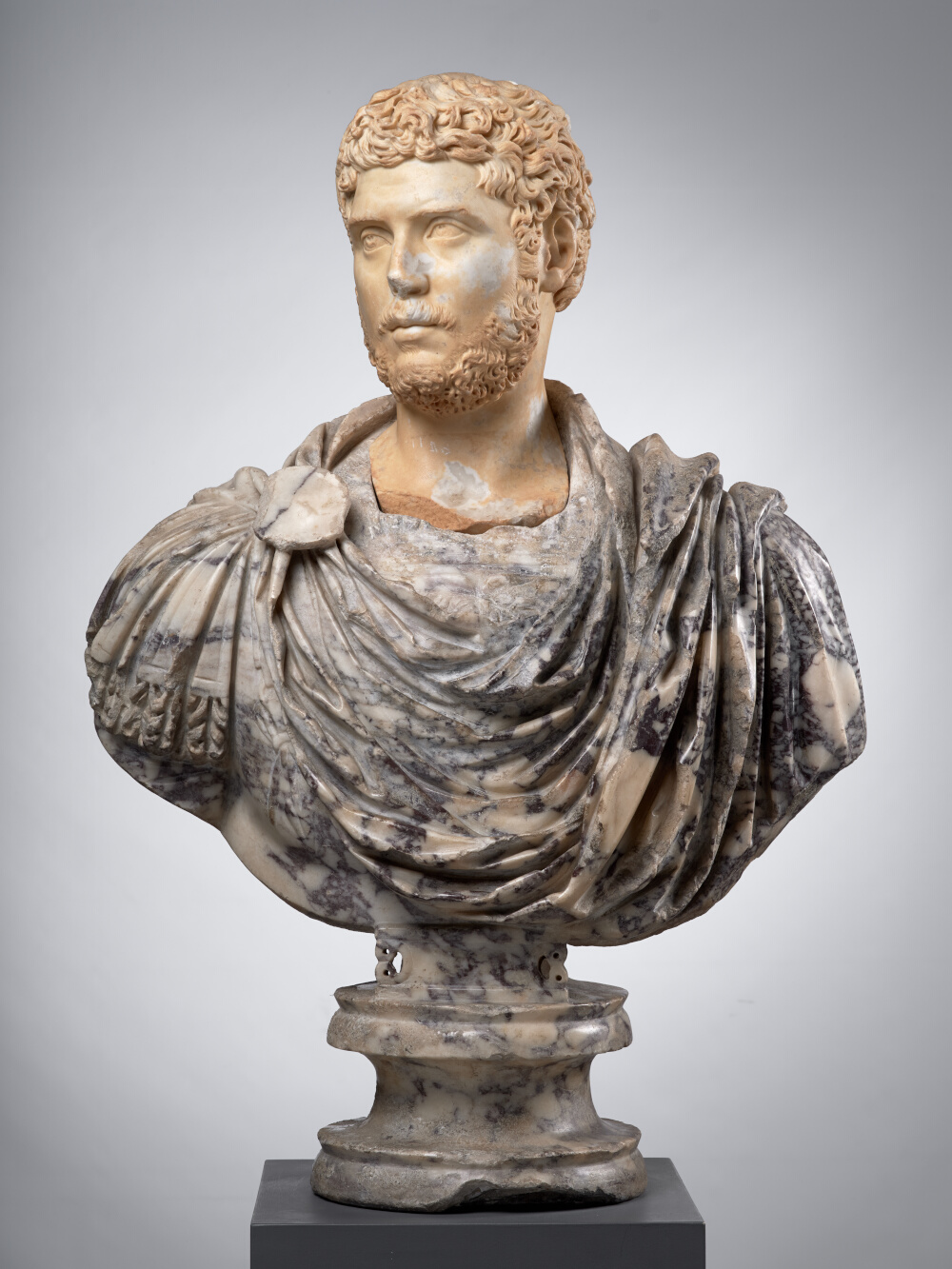
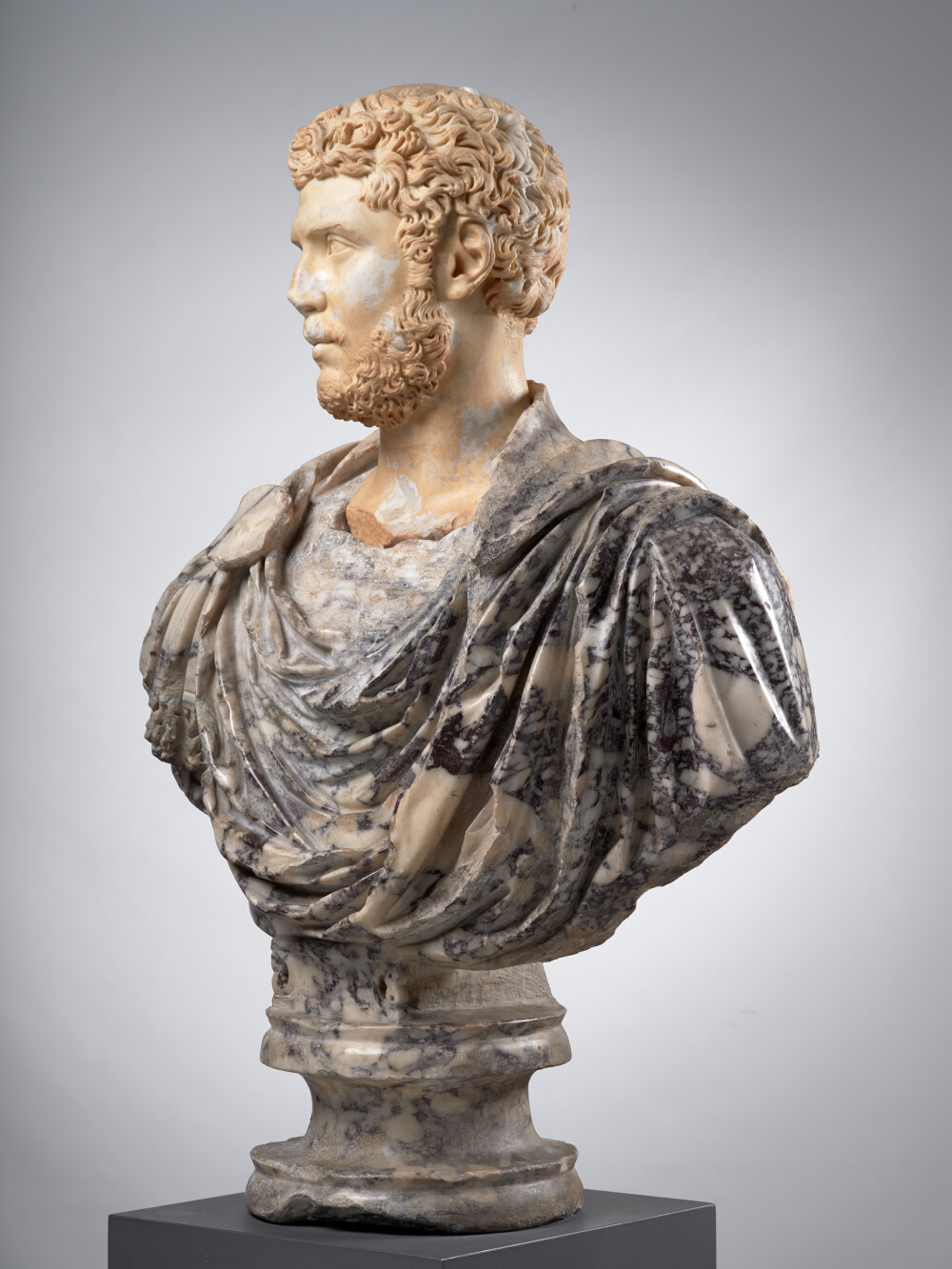
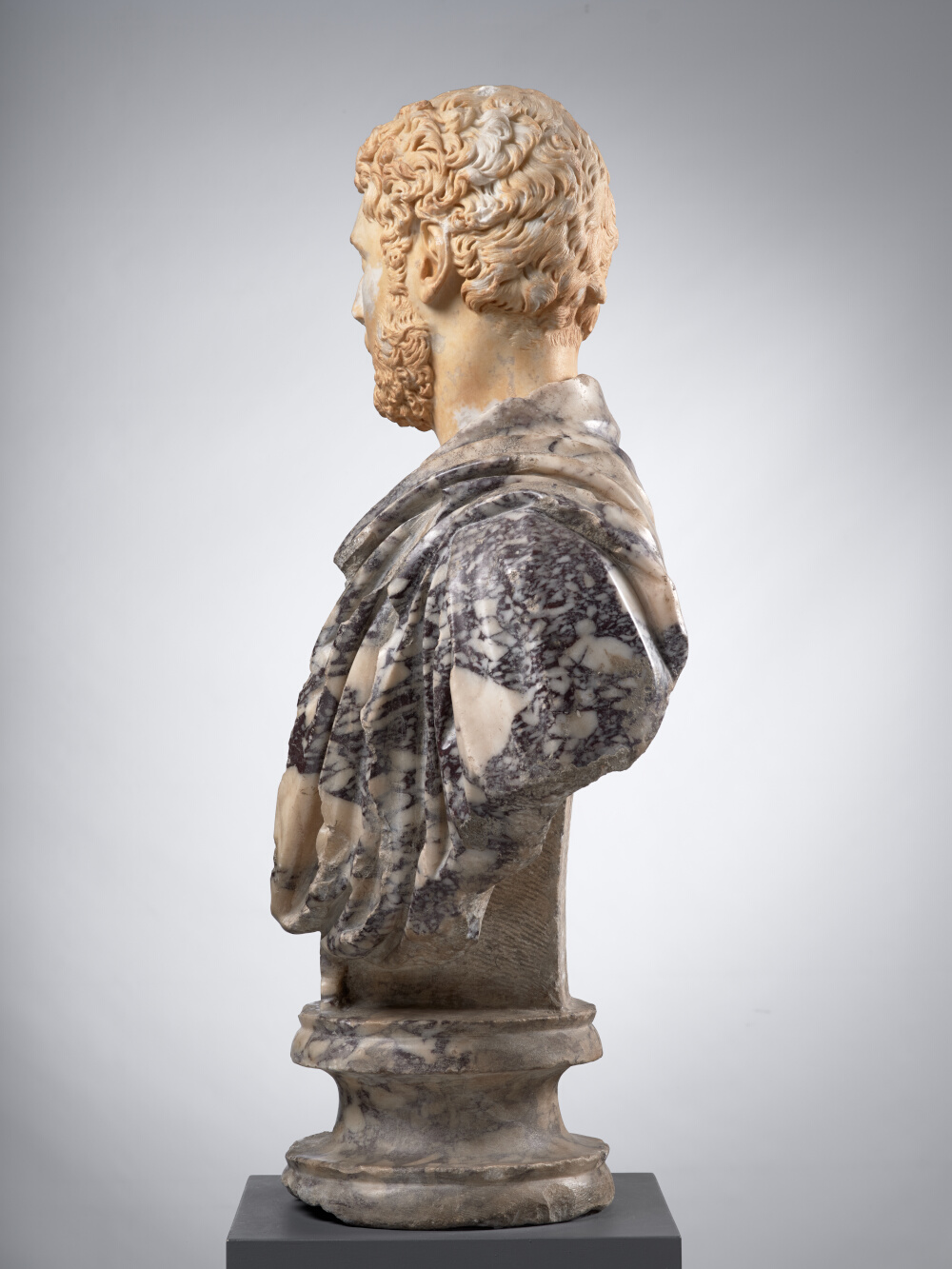
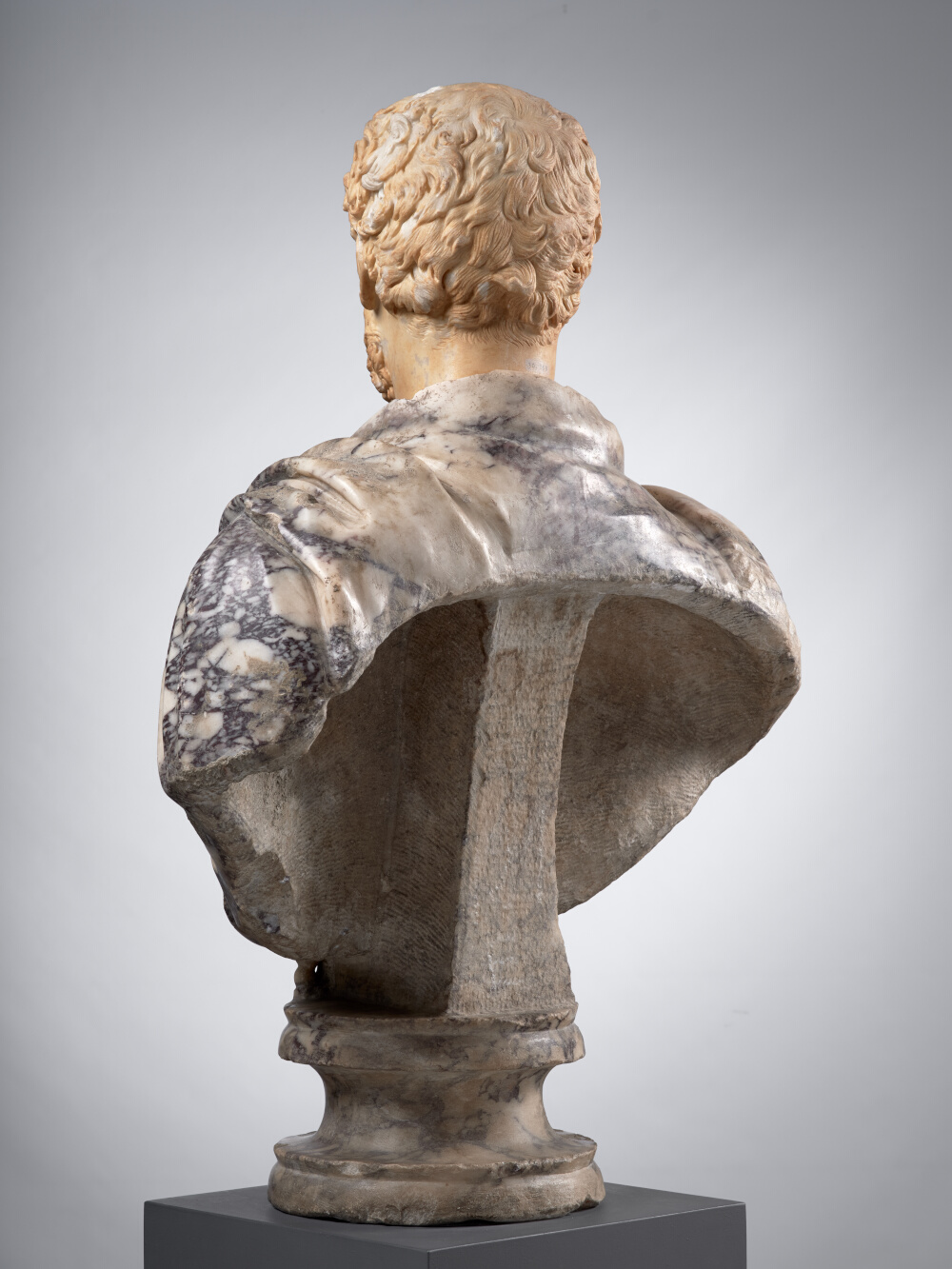
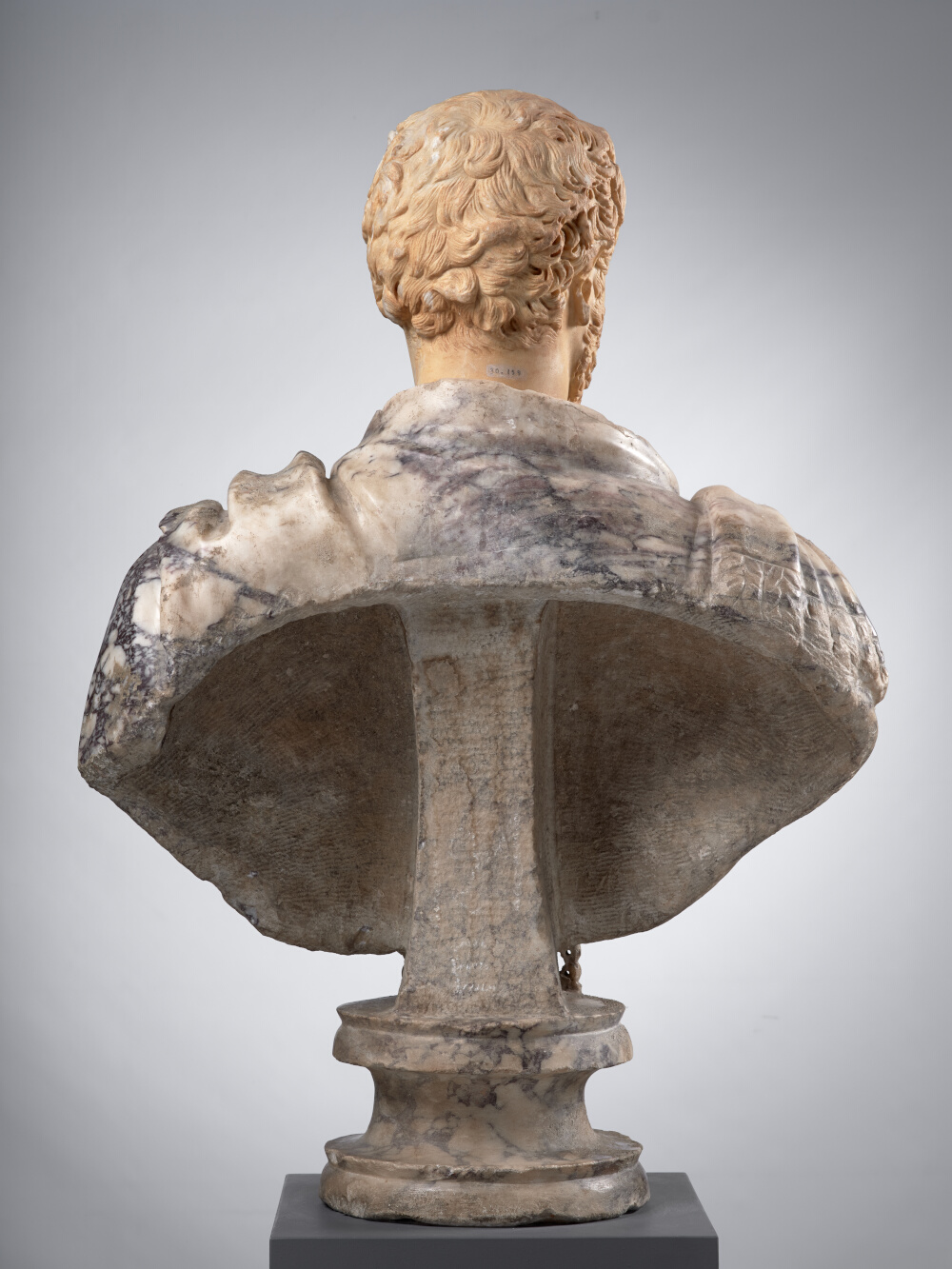
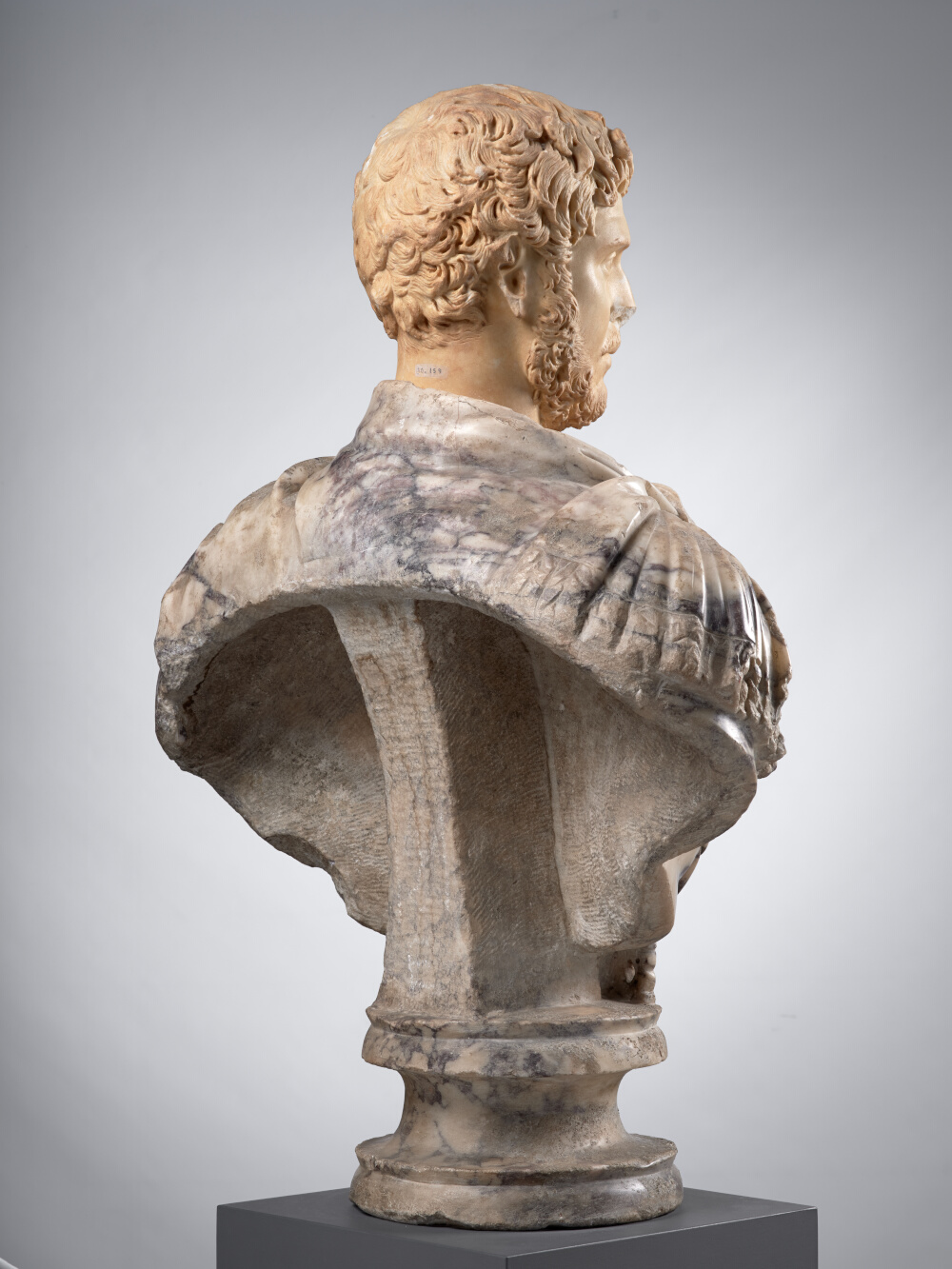
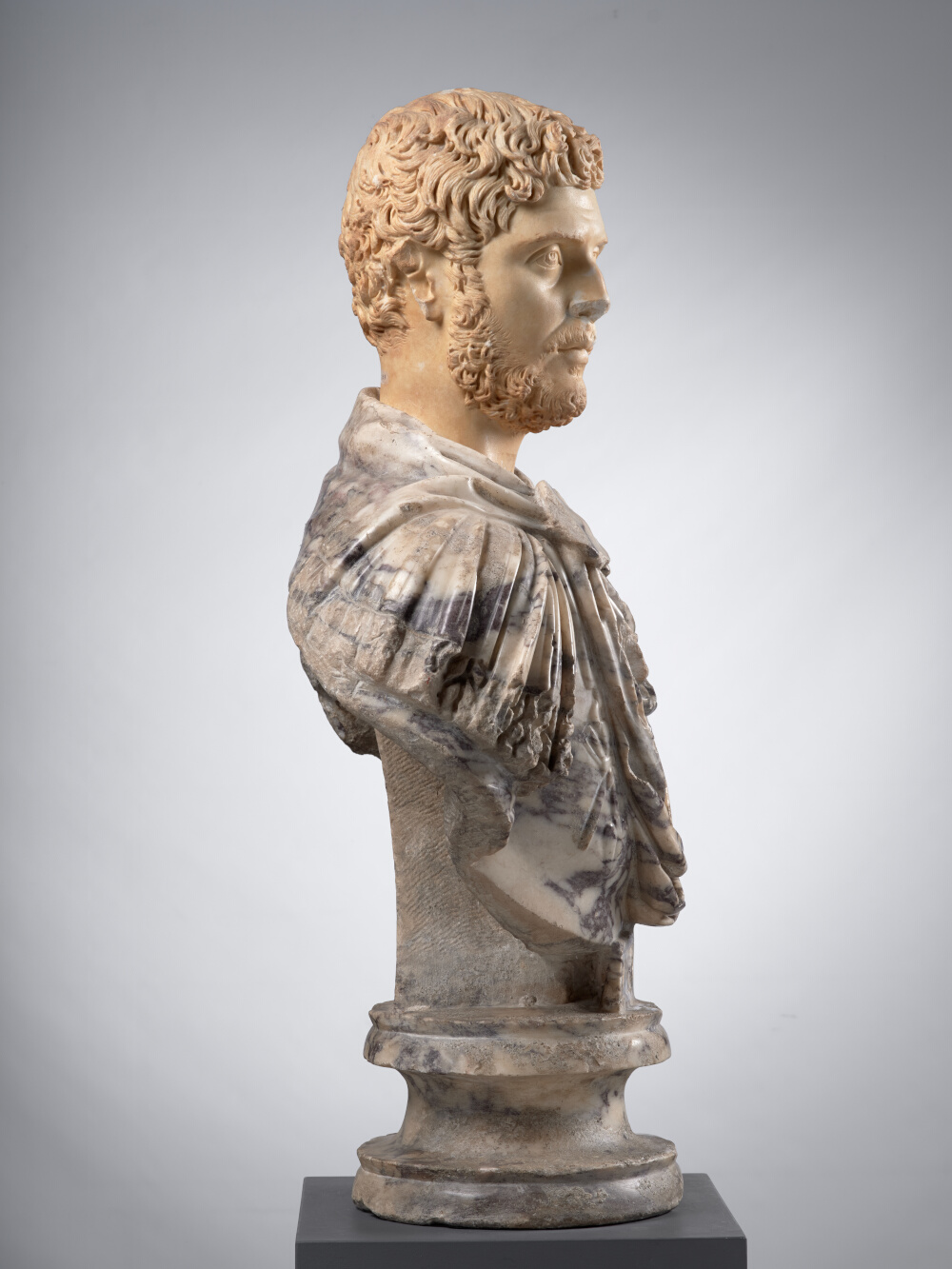
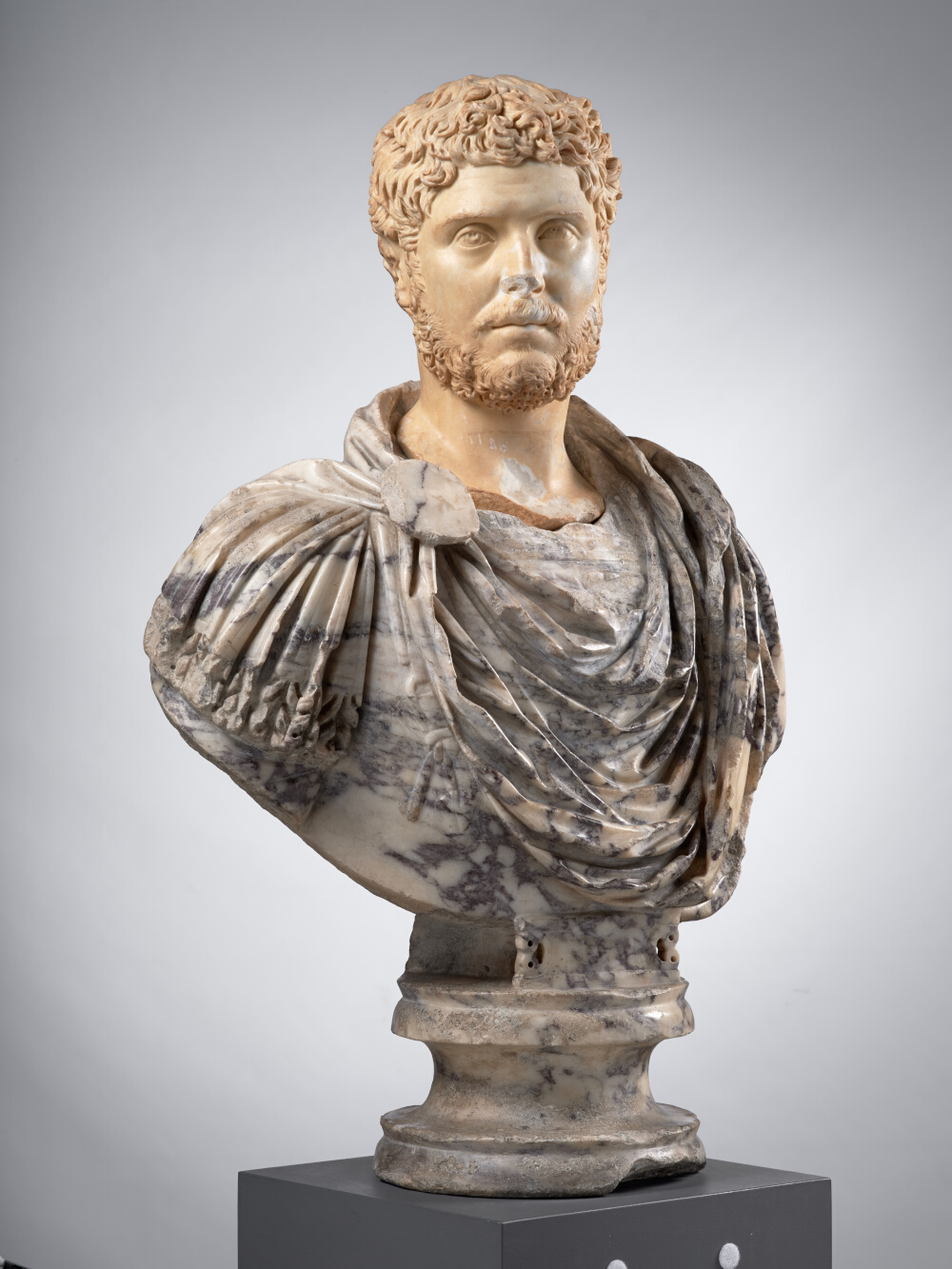
- Date de création
- Beginning of the Severan dynasty:195 - 205 (the bust may be slightly more recent)
- Material
- Phrygian Synnadic marble, also known as Pavonazzetto marble (Dokimium / Iscehisar, near Afyon province, Turkey) for the bust, and Göktepe marble, district 4 (Turkey) for the head
- Dimensions
- H. 92 x l. 64 x P. 32 (cm)
- Inventory number
- Ra 121
- Photo credits
- Daniel Martin
The colour of the marble head is the result of acids being used to remove accretions during the restoration works. This practice proved disastrous for many portraits.
Although different, both marbles are oriental (Turkey). Such combinations of contrasting materials are far from surprising, as they were highly appreciated during the imperial period. This Micrasian Pavonazzetto marble (from the Italian word pavone, meaning peacock) was particularly appreciated for its flamboyant appearance: its purple, violet, blue and green veins and spots suited the ostentatious extravagance of powerful men in Rome. The quarries of Synnadic stone were imperial property, and their intense excavation began during the Augustan dynasty. Thus, this marble from the Afyon region (known as lithos Synnadikos to the Romans), was used to make the columns of the House of Augustus on Palatine Hill, as well as, combined with other marbles, the porticoes of the Forum of Augustus, and the paving slabs of the temple of Mars Ultor P. Pensabene, « Cave di Marmo Bianco e Pavonazzetto in Frigia. Sulla Produzione e sui Dati Epigrafici, » Marmora, 6, 2010, pp. 71–134, en partic. p. 78.. But it wasn’t until the end of the 1st century that very large quantities of coloured Micrasian marbles began arriving in Rome to be used, first and foremost, in the monumental and sumptuous sites chosen by Domitian, the last of the Flavian emperors. At the beginning of the following century, Pavonazzetto marble from Afyon province was also used to produce sculptures, as evidenced by the impressive and very expressive depiction of captive Dacian warriors in Trajan’s Forum.
The paludamentum (a cloak worn by generals and emperors) is fastened with an embossed round fibula that partly hides the Gorgon head on the cuirass. On the left of the latter, a lace is seen hanging from the buckle of the strap, one end of which ends in an ivy leaf. The head is apparently slightly older than the bust, as both elements were paired during 19th and 20th century marble restoration campaigns.
P. Capus
Bibliography
- Cazes et al. 1999 D. Cazes, E. Ugaglia, V. Geneviève, L. Mouysset, J.-C. Arramond, Q. Cazes, Le Musée Saint-Raymond : musée des Antiques de Toulouse, Toulouse-Paris. p. 135-136
- Espérandieu 1908 É. Espérandieu, Recueil général des bas-reliefs de la Gaule romaine, 2. Aquitaine, Paris. no 967
- Fittschen, Zanker 1985 K. Fittschen, P. Zanker, Katalog der römischen Porträts in den Capitolinischen Museen und den anderen kommunalen Sammlungen der Stadt Rom, Mainz.
- Joulin 1901 L. Joulin, Les établissements gallo-romains de la plaine de Martres-Tolosane, Paris. no 303 E (tête), no 315 D (buste)
- Rachou 1912 H. Rachou, Catalogue des collections de sculpture et d’épigraphie du musée de Toulouse, Toulouse. no 121
- Musée Saint-Raymond 1995 Musée Saint-Raymond, Le regard de Rome : portraits romains des musées de Mérida, Toulouse et Tarragona. Exhibition, Mérida, Museo nacional de arte romano ; Toulouse, Musée Saint-Raymond ; Tarragone, Museu nacional arqueològic de Tarragona, 1995, Toulouse. no 102
- Bulletin municipal Toulouse 1936 Bulletin municipal Toulouse, Bulletin municipal, Toulouse. p. 833
To cite this notice
Capus P., "Man’s head, now mounted on a bust of Pavonazzetto marble", in The sculptures of the roman villa of Chiragan, Toulouse, 2019, online <https://villachiragan.saintraymond.toulouse.fr/en/ark:/87276/a_ra_121>.